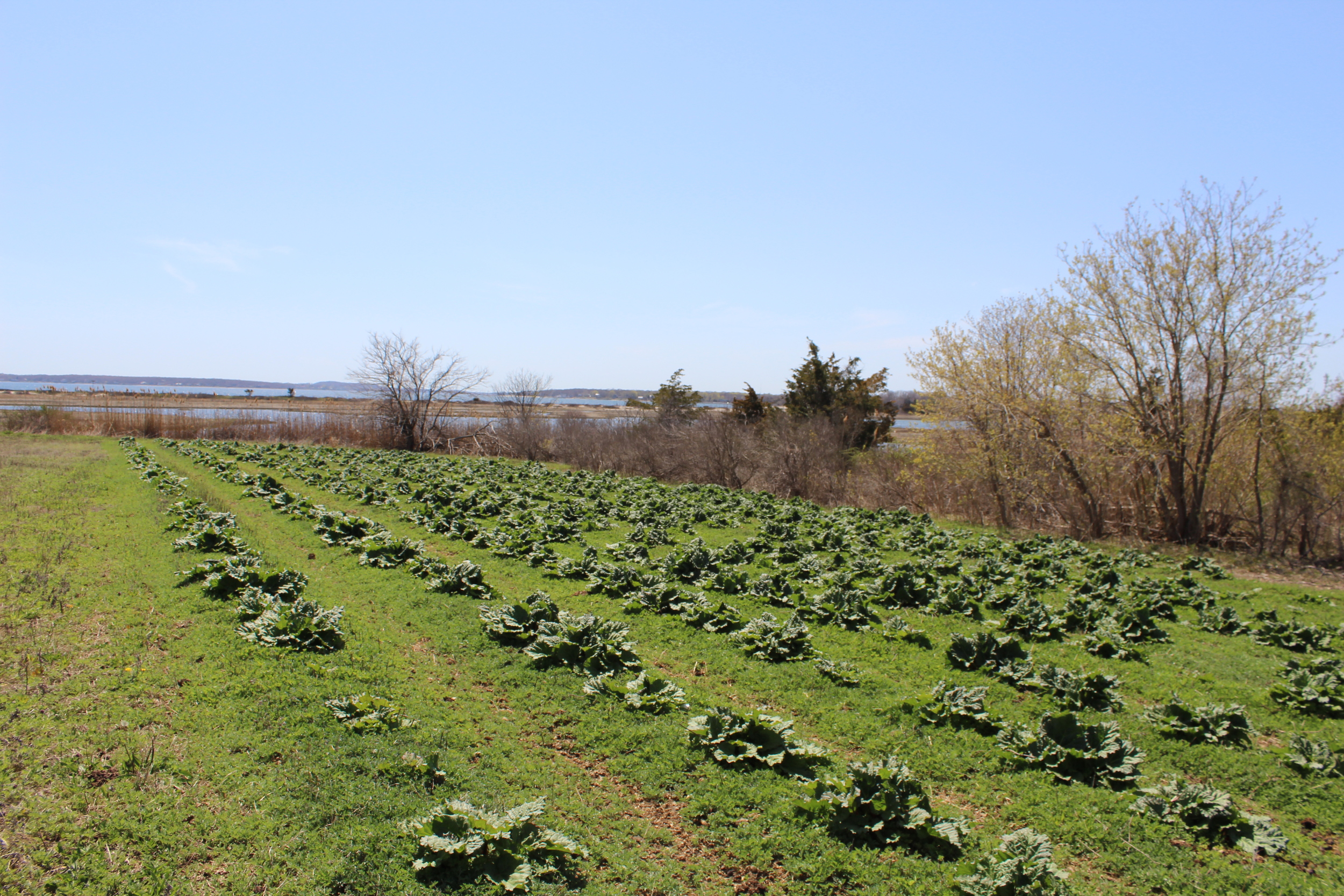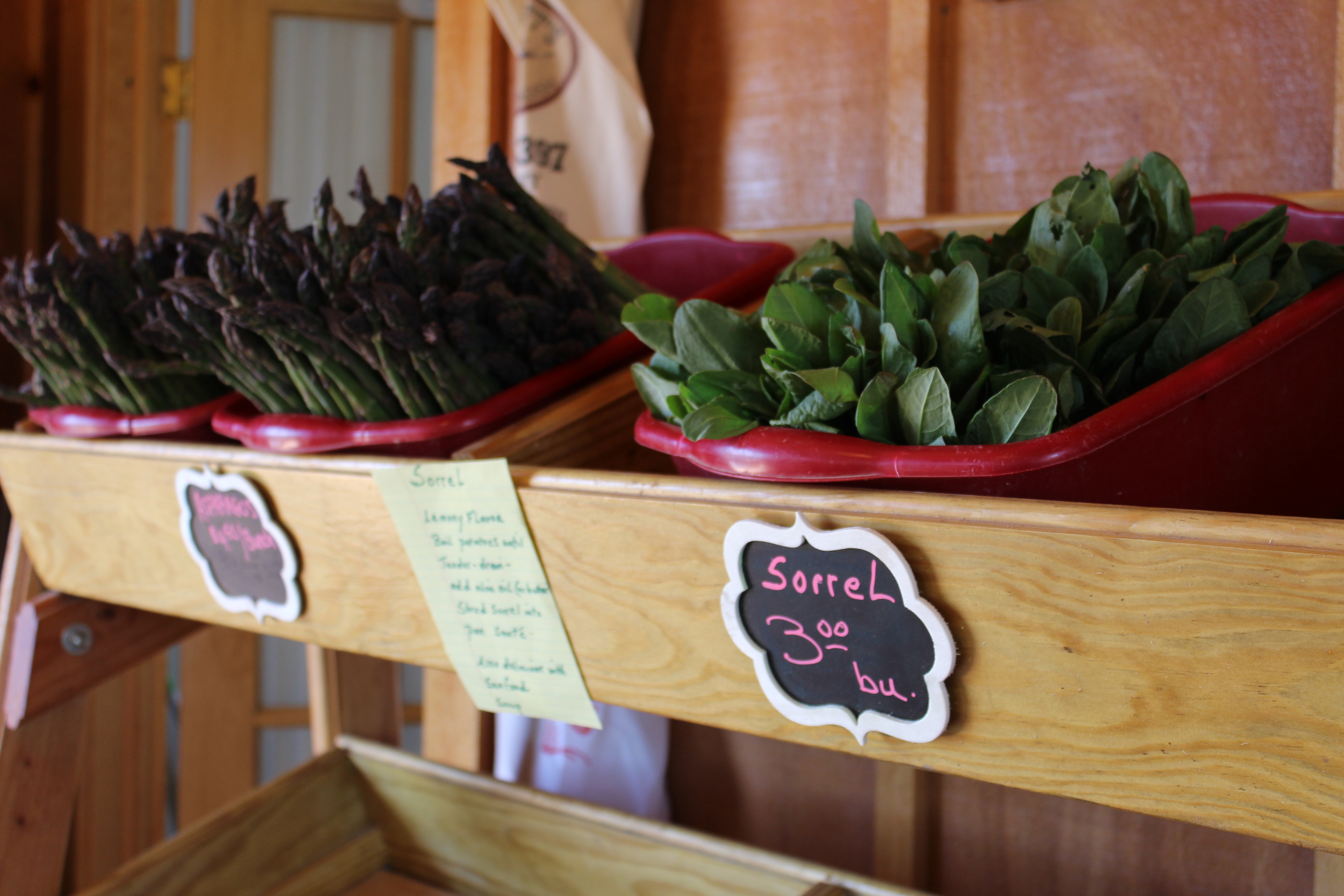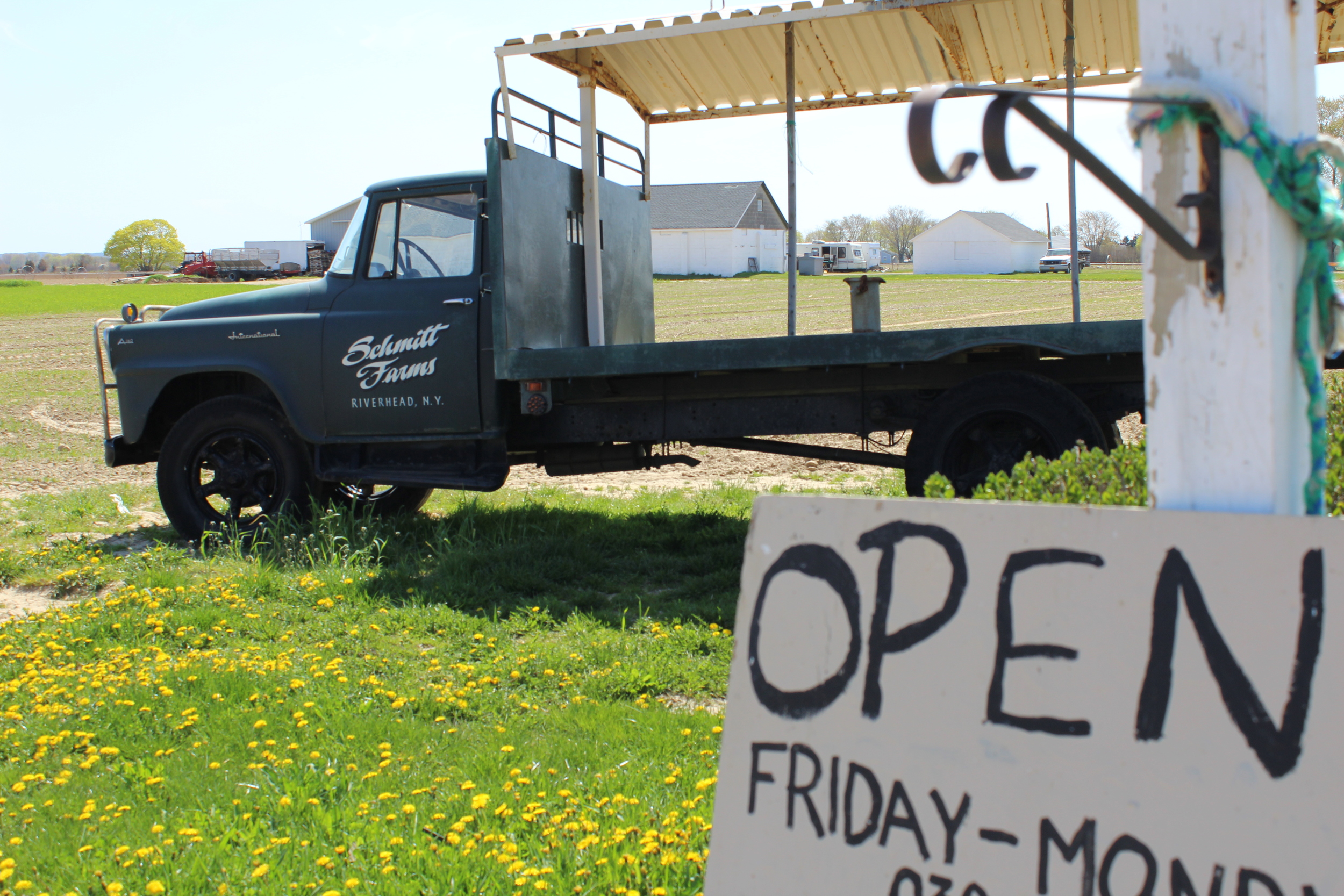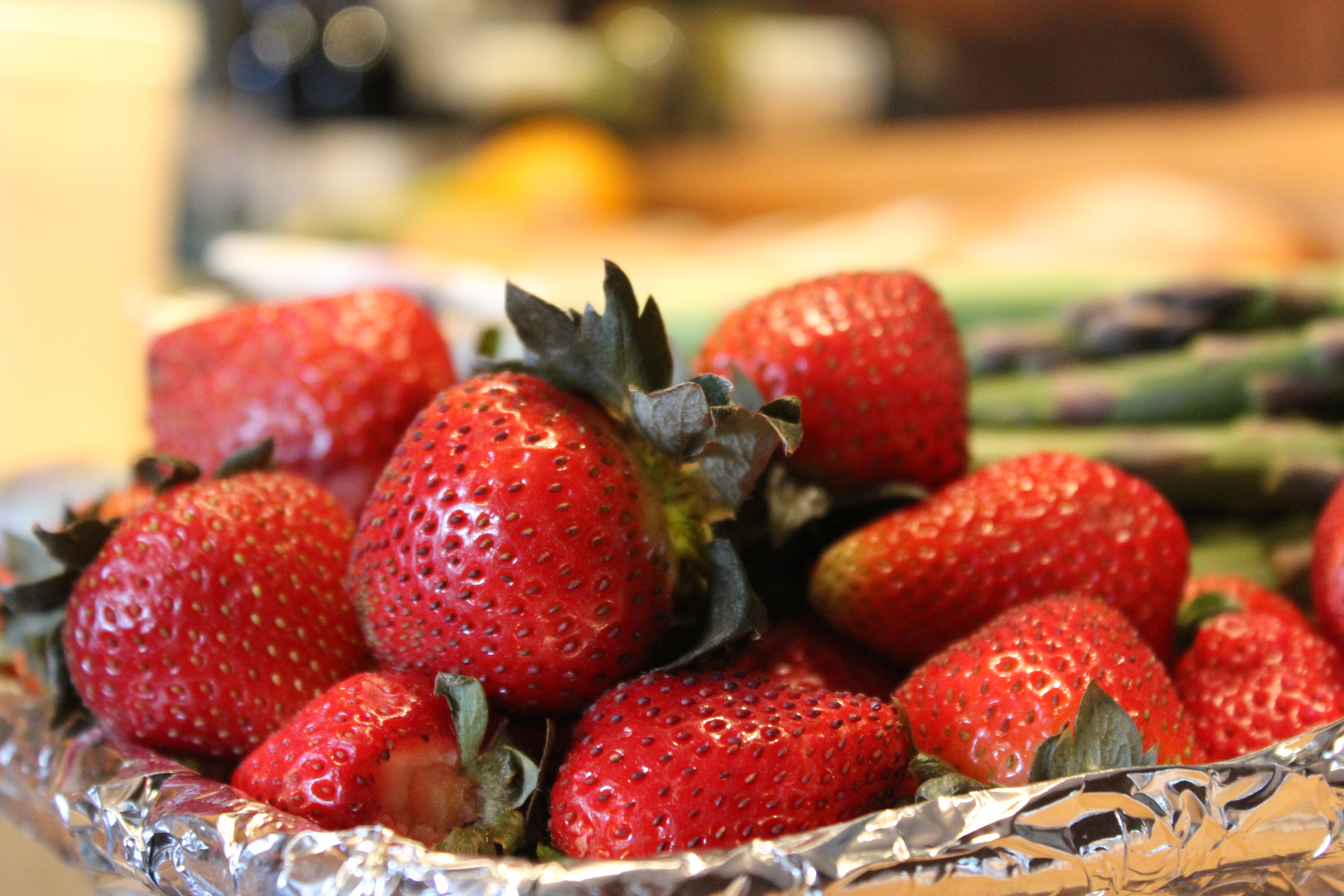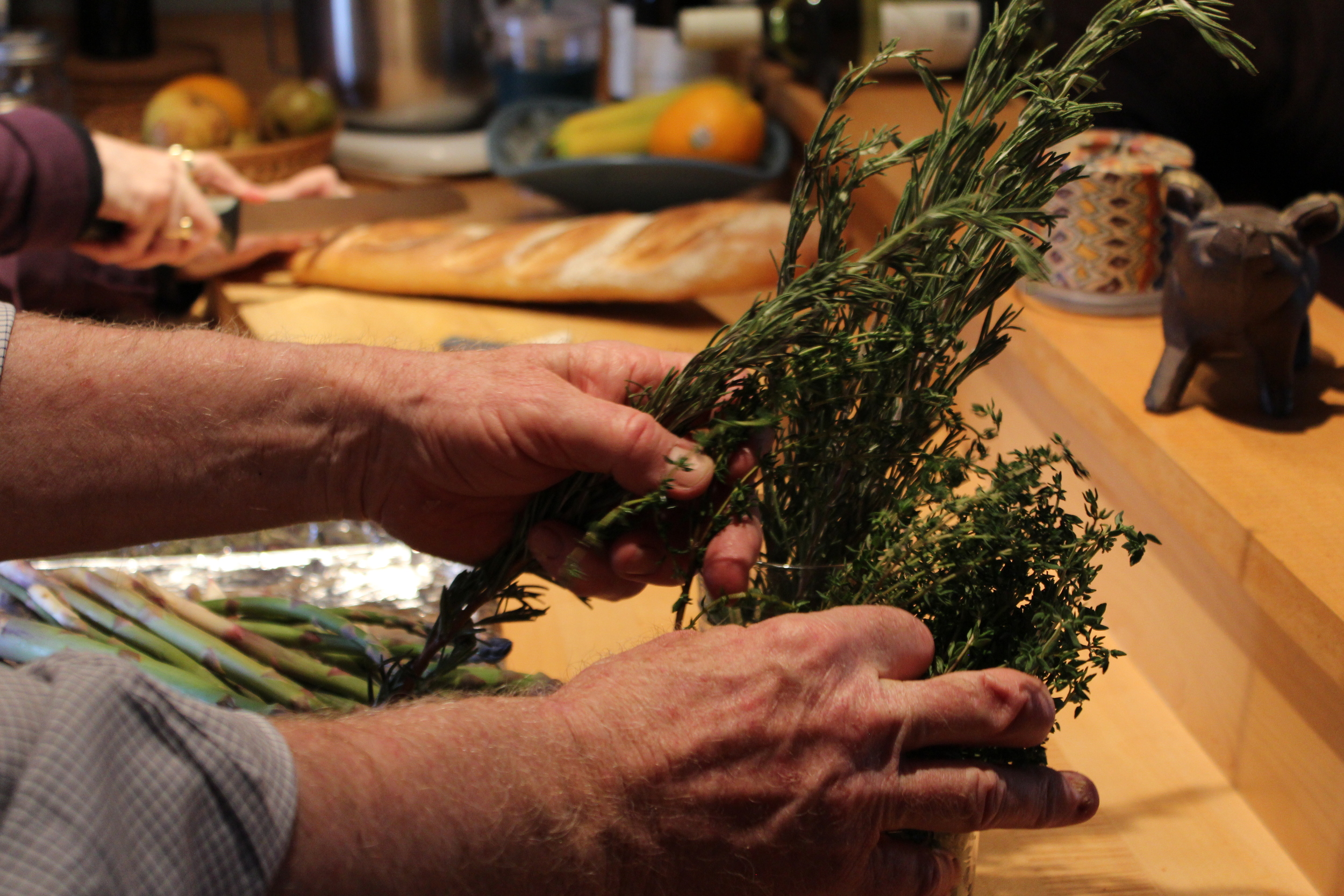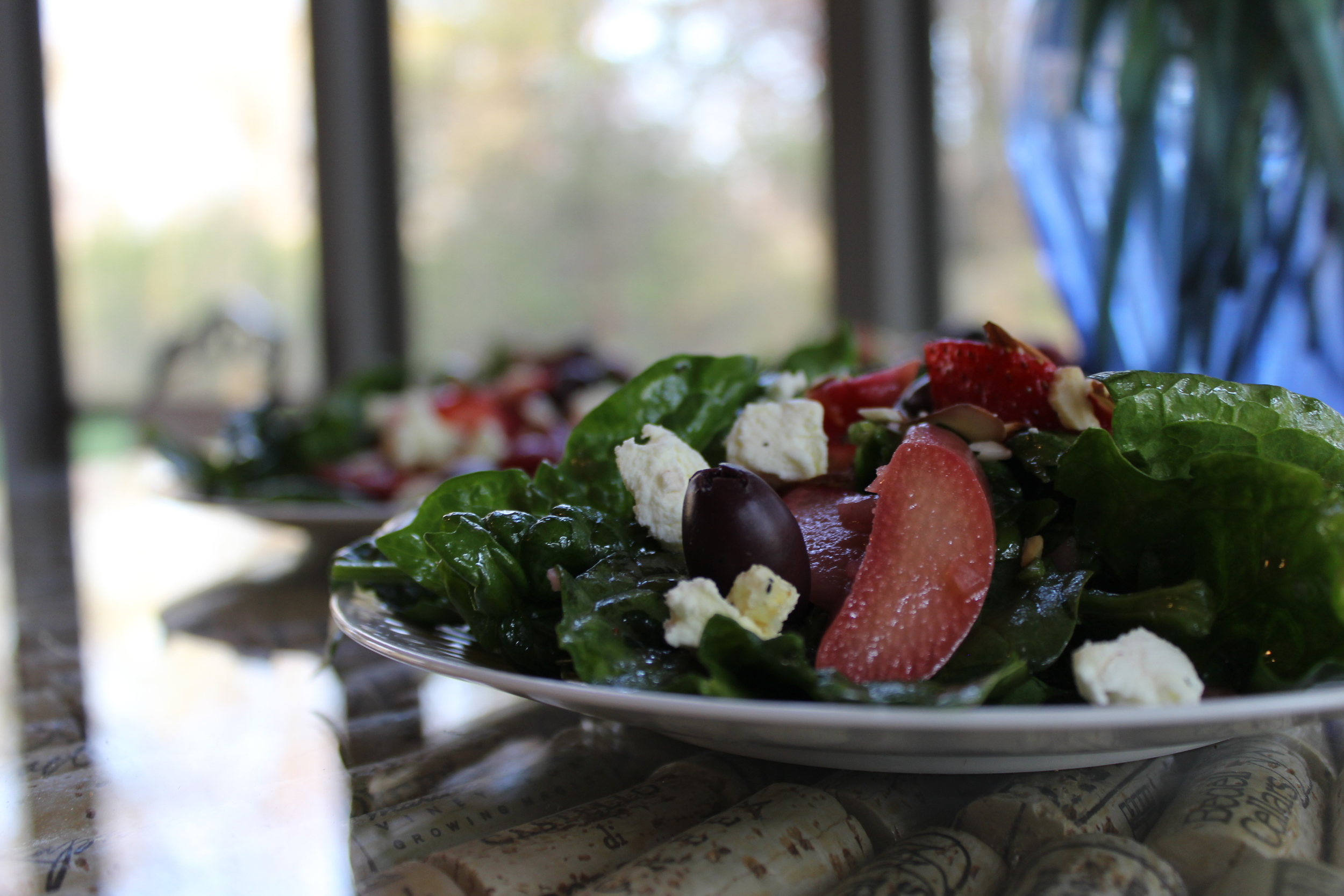
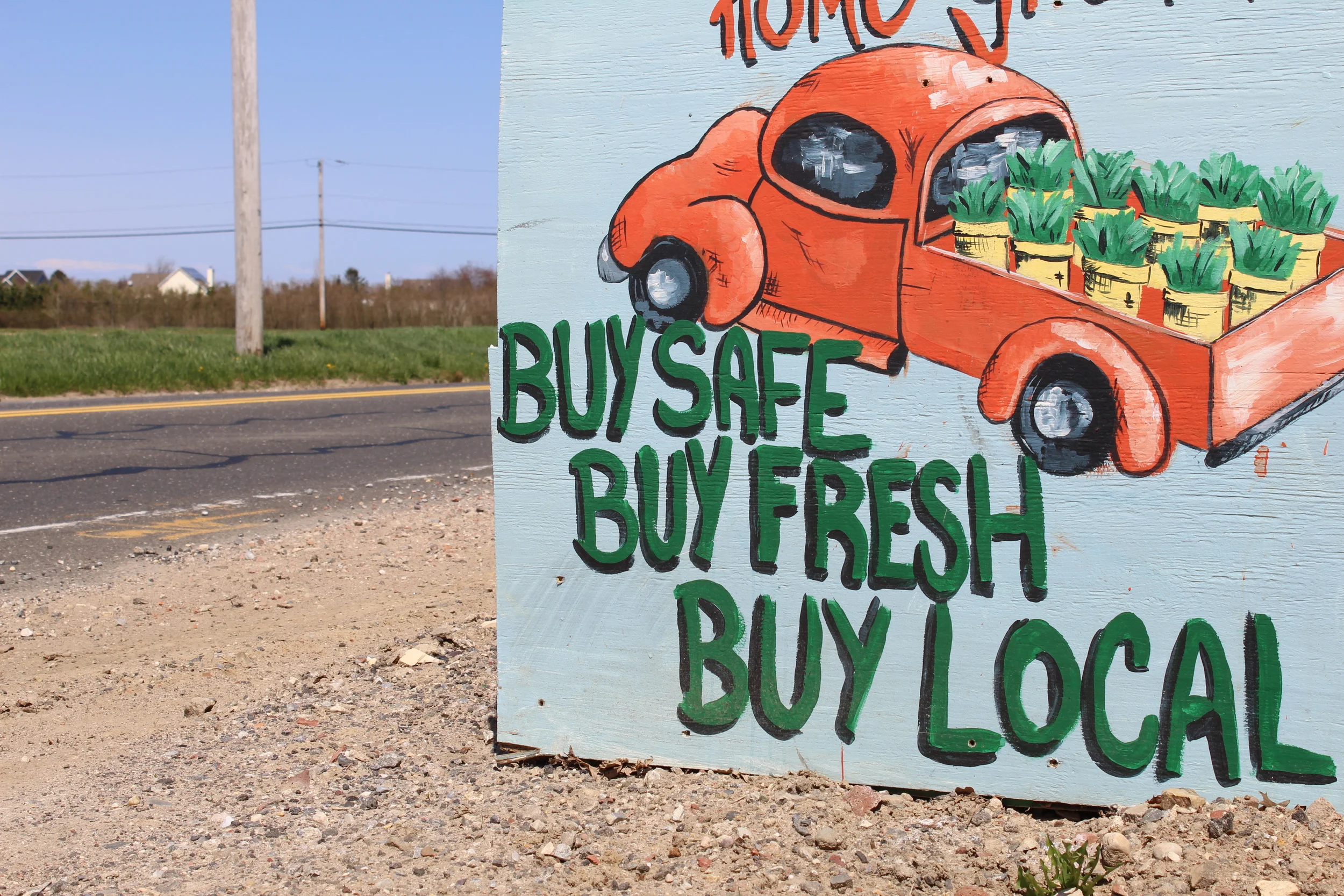




Farm to Table Movement
FARMING TRADITION- SUSTAINABLE LIVING- STRENGTHENING COMMUNITY
Farm to Table Movement
FARMING TRADITION- SUSTAINABLE LIVING- STRENGTHENING COMMUNITY
Photos By Nicole Sims

Continuing the Tradition
"The taste of the food won me over. My stomach convinced my brain that this was the right way to go." -Ira Haspel
Continuing the Tradition
"The taste of the food won me over. My stomach convinced my brain that this was the right way to go." -Ira Haspel
From the Farm, to the Table
By Nicole Sims
Ira Haspel, the owner of KK’s the Farm, never thought of being a farmer and changing the way some people think about food. The 69-year-old farmer and his late wife bought an abandoned five acre farm in Southold, N.Y., in 1999. What was meant to be a vacation home turned into a place that provided some of the most popular produce on the North Fork.
Locally sourced food is a major contributor to Long Island’s economy. According to the most recent census done by the U.S. Department of Agriculture, the total sales of agricultural production on Long Island reached $258.7 million in 2007. Suffolk County accounted for 94 percent of these sales. This number is represented by the vast amount agriculture that is produced on Long Island including wineries, vegetable, fruit, livestock and aquaculture. Locals have also become more invested in maintaining a healthier lifestyle, living sustainably and eating at restaurants where the source of their food is clearly a part of the menu.
“We only cultivate about two acres, and on those two acres we produce a tremendous amount of food,” Haspel said. He grows his produce biodynamically, which is a method of organic farming. The produce he grows continues to be in high demand among restaurants like First and South on the North Fork, local businesses like The Orient Inn and even a food delivery service that makes deliveries on Long Island and even the five boroughs of New York.
His farm specializes in growing more than 30 varieties of greens, heirloom tomatoes and garlic. Haspel is one of more than 700 farmers in New York certified by the Northeast Organic Farming Association. This group also is a part of the local farm to table movement.
“It’s more than just a word, it’s a huge trend nationally,” said John Ross, the former owner of Ross’ North Fork Restaurant and pioneer of farm to table cuisine on Long Island. The phrase, farm to table, refers to consumers preference of getting fresh produced foods from local farms to the table of the consumer. This means having access to the freshest produce and livestock available, and also establishing connections with local farmers.
“What we’re now calling farm to table was just relationships that restaurants and distributors had with local growers,” said Marc Fasanella, a Stony Brook Sustainability Studies professor. “Farm to table creates this much more localized economy and the carrots might look different, the tomatoes might look different but that doesn’t matter because the restaurateur or grocer knows that farmer, and he knows that farmer wouldn’t give him any bad produce because they have a personal relationship.”
Ross was the first business owner on Long Island to operate solely on locally sourced food. Since he opened the doors of his restaurant in 1973, he built a reputation among locals for having the best and freshest menu. The menu changed daily, depending on what was available from local farms. “It’s one thing to buy a bottle of wine, or a good bag of carrots or whatever you want, [but] it’s another thing to know the people that grown them,” Ross said of the relationships he developed with local farmers over the years. “You don’t know Birdseye peas, you don’t know where they come from, you don’t know who owns it, you don’t know anything.”
This type of personal relationship between farmers and local business mean people don't necessarily have to rely on mass production for any of their products. It also eliminates the need for food shipped from overseas. “It is more costly at this point to use local foods, but the benefits outweigh the cost,” said Joan Turturro, a chef and owner of the Orient Inn. “Local foods are so fresh that they become the stars in a meal.”
While the sourcing of local foods for restaurants may be more expensive and even affect the price of dishes on the menu, Turturro is among a number of restaurants and business owners on Long Island that depend on local farmers, including Haspel, to supply her inn with the best of what is locally available to cook with. “When I am designing menus, I call my local farmers and producers to find out what is available and design menu offerings based on availability,” Turturro said.
“The key to all of it is immediate access and freshness,” said Peter Gianotti, a Newsday food critic. While the cost of local food at restaurants and local grocery stores may have a more expensive price tag, Gianotti feels there’s no excuse to not eating locally grown food when it is so readily available here. “Certainty on Long Island more and more restaurants are trying to make use of the local bounty,” Gianotti said. “On Long Island were fortunate in that one of the biggest businesses has been agriculture.”
Taking advantage of the bounty of produce, livestock and seafood available on Long Island is something that Judiann Carmack-Fayyaz, the Slow Food East End Chair, thinks should be available to everyone. “Good food should not be a privilege,” Fayyaz said. The local chapter of the non-profit organization, Slow Food USA, works toward promoting and teaching the community about local food consumption. “We believe that everyone should benefit fromwhat nature readily provides. It is really important for everyone everywhere to know that there is no obstacle to eating well, [and] if you can't afford to buy organic food or produce, then grow it.”
Photos By Nicole Sims

Recipe: Rhubarb Tarte Tatin
"In my little world on the North Fork, I am very fortunate to have some of the best food in the world here in my back yard." - John Ross
Recipe: Rhubarb Tarte Tatin
"In my little world on the North Fork, I am very fortunate to have some of the best food in the world here in my back yard." - John Ross
Let's Get Cooking!
INGREDIENT CHECK LIST
Photo By Nicole Sims
Rhubarb Filling Dough Ingredients
4 cups sliced rhubarb 1/2 cup of sugar
4 tbsp. butter 1/4 tsp. salt
1 cup of sugar 2 1/2 cups flour
1 tbsp. lemon juice 2 tsp. baking powder
2 tsp vanilla extract 6 tbsp. chilled butter
1/2 tsp. salt 1/2 cups shortening
1/3 cup milk
2 eggs
Recipe Courtesy of John Ross

A Farmer's Struggle
A Farmer's Struggle
“I think a lot of farmers face problems that get exacerbated here.”
Unlike most farmers across the nation, farmers on Long Island face a number of issues that are especially difficult to overcome. According to the most recent census by the U.S. Department of Agriculture, Long Island has 35,690 acres of land devoted to farming, about a quarter of the 150,680 acres available in 1950. “Our produce is just excellent, but we’re a tiny area,” Ross said. “Quality wise we got no apologies to make at all, we’re awesome… but small, and that’s not going to change.”
Small-scale farmers also face dealing with competition from developers, nursery owners and people that can afford to use acreage of land for equestrian or lawn purposes. The price of land has also been affected by this, and on average an acre of land costs $120,000 an up on Long Island. This is well above the means of most farmers who likely need multiple acres to farm, and must also pay for other farm expenses such as equipment and labor.
This is an issue that the Peconic Land Trust has been working towards overcoming for farmers since 1983. The trust is responsible for protecting around 11,000 acres of farmland on Long Island. After undergoing an application process, farmers are also able to lease this land, which comes equipped with deer fences and irrigation systems, saving farmers money on infrastructure costs.
“We're so dedicated to this because it’s our history, there are great soils that are very productive and it’s sort of integrally integrated into our economy,” said John v.H. Halsey, the president and founding member of the Peconic Land Trust. “It’s a heritage that really goes back thousands of years here that we’re trying to maintain here.”
Farmers on Long Island also must find a way to deal with finding people to harvest the land, and supplement high labor costs. “It’s hard to find labor here because it’s hard for people of modest means to live here,” Halsey said. “It’s not like you can find a lot of local people here interested in working on farms, and there aren't a lot of people here that are living nearby farms that are looking for that kind of work.”
However, even if farmers are able to overcome the issue of obtaining land and a work force, some still struggle with just making profit because of these expenses. While there has been a high demand for local produce especially among local restaurants, farmers such as Haspel are not able to live sustainably on that income alone. “They have to have a combination of ways in which they sell their product,” said Jerilyn Woodhouse, a Long Island contact of the New York Small Scale Food Processors Association and owner of the Taste of the North Fork food supply business.
“[They] can't depend just on restaurants, so [they] have to have a farm stand, or have to have [their] own wholesale account and in the case of what I do, it creates another stream of income for farmers.” Woodhouse provides services for farmers, including Haspel, by taking their raw materials and canning or jarring it into value added products. She does this for ten to twelve local farmers year round. “They can sell it at their farmers market, they can sell it at their farm stand, and in some cases they can have a website and sell it that way,” Woodhouse said.
The struggle for small-scale farmers to make money also stems from the lack of support from the U.S. government, that industrial or larger scale conventional farms receive in the form of subsidies. This also affects the competition of pricing for goods that small farmers produce compared to the price that has been branded in grocery stores. “The price you see in the supermarket is not the real price of food,” Haspel said. “It’s a subsidized price as opposed to the smaller farmers that tend to be the biodynamic and organic farmers, [which] are not subsidized. So we have that battle going on.”
This is not the only battle when it comes to the farm to table movement. Because of what is available in supermarkets, some people are not accustomed to the difference in taste of food that is really fresh. Kathleen Masters, the head of the non-profit Amagansett Food Institute, thinks that although the South Fork Kitchen at Stony Brook University's Southampton Campus isn't successful financially, it has allowed customers to know what North Fork farmers and local product business producers have to offer.
“At this point if it were a for profit business it would be failing, because there are not yet enough people eating every day in the cafeteria,” Masters said, “[but] we’re doing it because the university asked us to, but also as a way to [show the campus community] that we have all these wonderful products that are coming from our farms and producers on the East End of Long Island, and they should taste them, and also to sort of teach people what real food tastes like.”
Although the farm to table movement has helped to raise awareness and generate a buzz among local consumers, John Ross, the pioneer of farm to table cuisine on Long Island, still sees room for improvement. “One of the continuing problems of Long Island and the North Fork is that there is a big gap between the people that have, and those that don’t,” Ross said, “A person that’s barely able to feed their family isn't gonna be buying a $37 chicken,” such as the organically raised chickens that can be purchased from small farmers.
“Real food can be produced economically, and it can be entered into the food system,” Ross said. At his restaurant there used to be a special for a $2 bowl of corn on the cob that was picked fresh, and served just hours after being picked from the bushel. “People hadn’t tasted corn that was that fresh," Ross said, "and when it’s that fresh it bursts with sugar and it’s just delicious.”

Planting Seeds of Change
"KK Haspel was a pioneer. She defied stereotypes, followed her passions, worked long and hard and understood the interrelationships amongst all organisms including those you don't see. She is missed but is still present in the gardens that she helped create" - Judiann Carmack-Fayyaz
Planting Seeds of Change
"KK Haspel was a pioneer. She defied stereotypes, followed her passions, worked long and hard and understood the interrelationships amongst all organisms including those you don't see. She is missed but is still present in the gardens that she helped create" - Judiann Carmack-Fayyaz
Edible School Gardens
Following the national farm to table trend, several schools across the East End of Long Island have tried to integrate courses into their curriculum that teach students how to garden and cultivate food. From onions to butternut squash, potatoes, strawberries and greens, what is produced in the garden even becomes part of the cafeteria menu.
On Long Island, there are approximately 25 school gardens within the Edible School Garden network. The late KK (Kathy Keller) Haspel, played an integral part in the creation of these gardens on the North Fork. Her husband, Ira Haspel, believes that what she worked so tirelessly to establish is a great achievement that she was able to make a lasting legacy.
"Whenever a contract came up from a school service provider, [KK] made them include a clause saying that anything that came out of the garden had to be used in the food preparation in the cafeteria, and the school service contract people had to pay fair market value for every pound of food coming out of the garden," Haspel said. "That [has] provided each individual school garden a way of income, and a way that they could continue to buy seeds and tools to keep going."
While every school that participates has a different program, there are courses offered at every grade level from elementary school through high school. "Working in an environment like a school garden, adds relevance, rigor and relationships to education," said Judiann Carmack-Fayyaz, the current president of the Edible School Gardens. "To know what food is, where it comes from and how to grow it is priceless in so many ways."
